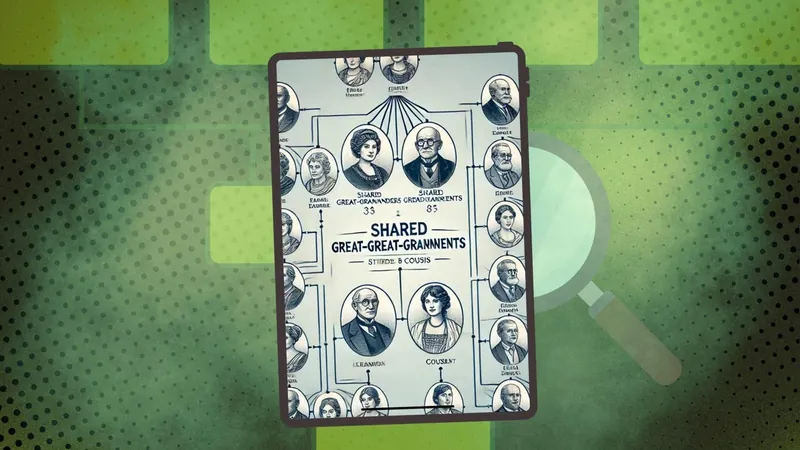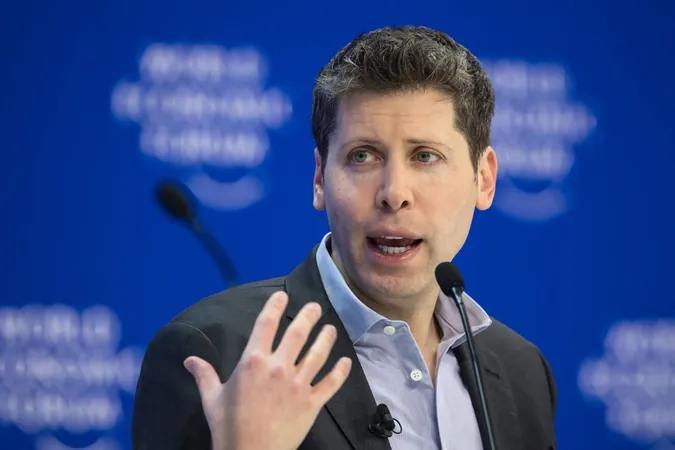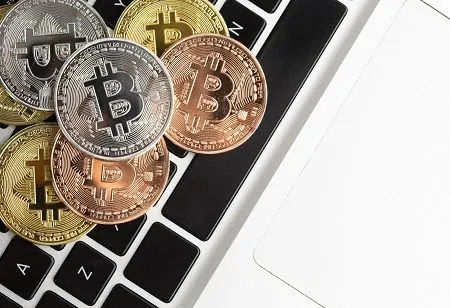
Unraveling Genealogy Mysteries: How I Harnessed AI to Unlock Family Secrets
2025-01-22
Author: Ken Lee
In 2017, I embarked on a journey into my family's past after sending DNA samples to Ancestry and two other genealogical testing companies. Following the recent passing of my parents, I was motivated to uncover the truths about my ancestry that had long eluded me.
The results of my DNA tests opened a Pandora's box of revelations, leading to a narrative that was as enlightening as it was unsettling. Since then, I have dabbled more seriously with my family tree—pouring over documents and tracing connections to paint a clearer picture of my lineage.
Recently, I received a message from a DNA match who identified as a distant cousin. This contact piqued my interest as I had concrete data regarding our family relation; we share approximately 1% of our DNA, which makes us around third cousins. However, much about this newfound relative remained a mystery—their Ancestry username gave away neither their gender nor their real name, although they did share their approximate age, which is close to mine.
This is where the story becomes intriguing. My cousin, recognizing the complexities of our family connection, turned to ChatGPT for help. They were keen to explore the potential familial ties between us based on our DNA data, including insights into the likely lifespans and historical contexts of our shared ancestors.
With the permission from my cousin to share their experiences, I delved into how we used AI to gain clarity on our genealogy. I’ll break down the process we followed and how you too can leverage AI tools like ChatGPT in search of your own ancestral connections.
Unpacking the DNA Data
Starting with the DNA specifics from Ancestry, I examined the metrics provided: we shared 95 centimorgans (cM) across 10 segments of DNA on the maternal side, with a longest segment of 16 cM. Ancestry’s prediction labeled us as “half 2nd cousin 1x removed,” although shared DNA does not straightforwardly define familial relationships. Instead, it offers a guide to the potential connections across generations.
Curious about the meaning of the numbers, I posed a question to ChatGPT about the significance of the 95 cM. The AIs response clarified that cM is a measurement of genetic linkage, with higher values indicating closer relationships and more shared segments hinting at less distance between ancestors.
Determining the Relationship
Since my cousin and I were of similar ages, it seemed logical to explore if this meant we were more likely to be third cousins rather than second cousins once removed. ChatGPT confirmed this distinction, further demystifying our familial ties.
To visualize our connection, I asked ChatGPT for a diagram. After a few iterations and adjustments to ensure accuracy, I was presented with a helpful diagram indicating that we shared a common ancestor through our great-great-grandparents.
Mapping Out the Ancestors
Our exploration brought to light a question: how many great-great-grandparents did we share? When I queried ChatGPT on the potential family tree, the AI indicated that at the third cousin level, both of us would possess a pool of 16 great-great-grandparents, with only one pair overlapping—making the search for additional shared ancestry all the more critical.
Despite my efforts over the years, I had only definitively identified one great-great-grandparent, complicating our discovery process.
Digging Into Historical Context
In a conversation through Ancestry’s messaging, the cousin mused about using ChatGPT as “my new best friend” for historical insights into our common ancestor. Knowing that one of our families believed to have come from Russia, I provided ChatGPT with specific details: our familial connection and migration history.
The AI responded with potential birth and death timelines for our shared ancestor, initially estimating a range of birth years between 1847 and 1861 and death years from 1870 to 1921. Intrigued, I asked how cultural contexts, such as being Jewish in 19th century Russia, might factor into our ancestor’s life, which prompted ChatGPT to reassess and narrow those timelines even further.
The refined range suggested our ancestor likely would have been born around 1820-1840 and died between 1870 and 1900. Such historical insights brought our family connection into perspective, indicating our shared lineage lived through tumultuous times.
A Paperclip’s Worth of Code
As I reflected on the findings, the analogy struck me: the average human holds around 200-250 grams of DNA. The amount shared between my cousin and me amounts to a minuscule 1%, roughly equating to the weight of a small paperclip. This tiny piece of our genetic puzzle symbolizes a shared history rooted in challenges of the past, bringing both of us together in an age where we live oceans apart, not knowing the names of those who came before us.
None of this would have been possible without modern technology. The advancements in AI and tools like ChatGPT make exploring genealogy more accessible and insightful than ever. Our ancestors' unspoken stories linger, reminding us of the interconnectedness of humanity across generations.
Do you have a captivating DNA story or have you explored your heritage using AI tools? Your journey might inspire others to delve into their past! Share your experiences in the comments below.




 Brasil (PT)
Brasil (PT)
 Canada (EN)
Canada (EN)
 Chile (ES)
Chile (ES)
 Česko (CS)
Česko (CS)
 대한민국 (KO)
대한민국 (KO)
 España (ES)
España (ES)
 France (FR)
France (FR)
 Hong Kong (EN)
Hong Kong (EN)
 Italia (IT)
Italia (IT)
 日本 (JA)
日本 (JA)
 Magyarország (HU)
Magyarország (HU)
 Norge (NO)
Norge (NO)
 Polska (PL)
Polska (PL)
 Schweiz (DE)
Schweiz (DE)
 Singapore (EN)
Singapore (EN)
 Sverige (SV)
Sverige (SV)
 Suomi (FI)
Suomi (FI)
 Türkiye (TR)
Türkiye (TR)
 الإمارات العربية المتحدة (AR)
الإمارات العربية المتحدة (AR)